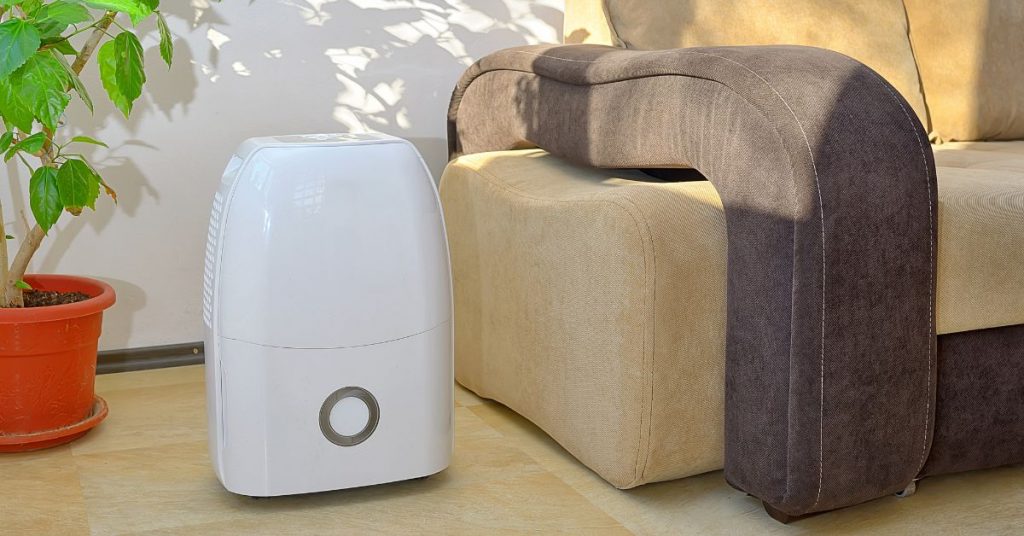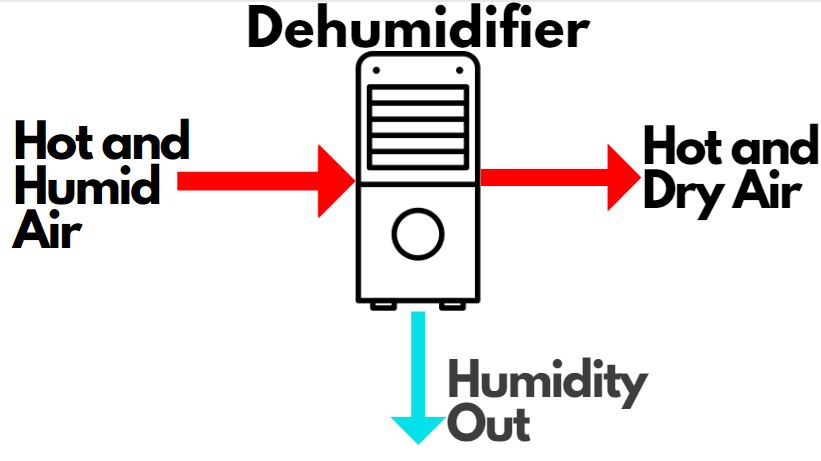
A dehumidifier primarily removes excess moisture from the air and can indirectly make a room feel cooler, but it is not a substitute for an air conditioner (AC) when it comes to cooling a space. Here’s a summary of the role of a dehumidifier in cooling and how it differs from an AC:
Dehumidifier
- Moisture Removal: Dehumidifiers are designed to reduce humidity levels by extracting excess moisture from the air. They condense moisture into water, which is collected in a reservoir or drained away.
- Temperature Impact: While dehumidifiers can make a room feel slightly cooler, their primary purpose is humidity control rather than temperature reduction. The cooling effect is a byproduct of moisture removal.
- Not for Temperature Control: Dehumidifiers do not lower room temperature as effectively as air conditioners. They are not designed to remove heat from the air but can help improve comfort in humid conditions.
- Energy Consumption: Dehumidifiers typically consume less energy than air conditioners, making them more cost-effective for humidity control.
Air Conditioner (AC)
- Temperature Control: Air conditioners, on the other hand, are specifically designed to cool indoor spaces by removing heat from the air and reducing the temperature to the desired level.
- Humidity Control: Air conditioners also have a dehumidifying effect as they cool the air, but their primary function is temperature reduction.
- Effective Cooling: AC units are highly effective at quickly lowering room temperatures, making them a preferred choice for cooling during hot weather.
- Energy Consumption: Air conditioners typically consume more energy than dehumidifiers due to their cooling capacity.
How a Dehumidifier “Cools” a Room
To understand how a dehumidifier makes a room feeler colder, you have to first understand how relative humidity affects temperature. You also have to know how humidity affects perspiration.
The human body has a natural way of cooling itself known as perspiration. Tiny pores on our skin produces droplets of sweat and when the sweat evaporates, it takes away heat with it thereby creating a cooling sensation.
That process works well if the surrounding air is ready to take up moisture from our bodies. And that is where relative humidity comes in.
By definition, relative humidity is the amount of water vapor in the air, expressed as a percentage of the total amount that the air can hold at that temperature. Therefore, an increase in temperature results in an increase in relative humidity.
When relative humidity is high, the air will be saturated with moisture. As such, the air is less likely to accept more moisture. The sweat on our skin will therefore not evaporate, meaning our bodies will not cool down but will instead feel sticky, hot and just uncomfortable.
On the other hand, when the relative humidity in a room is low/ideal, it means that the air can still take up more moisture. It therefore readily accepts sweat from our skin which creates a cooling effect.
To prove this point, you will notice that during winter when the relative humidity is low, it actually feels colder than it actually is. Also, Arizona (low humidity) doesn’t feel as hot as Florida (high humidity) during the summer.
That’s why you always hear the phrase “it’s not the heat it is the humidity”. That is because high humidity makes it feel hotter than it actually is and vice versa as I explained in this post.
The heat index, also known as apparent temperature or “feels like” temperature is the temperature which our body perceives it to be as a result of relative humidity.
For example, at a relative humidity of 70%, 85 degrees Fahrenheit feels like 93 degrees Fahrenheit. However, if a dehumidifier lowers the relative humidity to 30%, the 85 degrees now feel like 84 degrees. And that is how dehumidifiers create a cooling effect in a room.
To see how the apparent temperature changes as relative humidity changes, check out the relative humidity chart in this post.
How a Dehumidifier Works

Dehumidifiers work almost the same way as air conditioners. They have an evaporator coil, condenser coil, and compressor and also use a refrigerant to effect heat exchange.
When the dehumidifier comes on, the fan starts by pulling the warm and humid air in the room. The air is forced through the evaporation coil where a cold refrigerant will be flowing through.
And this is where it gets interesting. For the dehumidifier to remove the moisture from the air, it has to first cool it.
The refrigerant absorbs heat from the air, cooling it in the process. When the air gets cooled, the moisture in the air condenses and collects in an inbuilt condensate tank inside the dehumidifier.
For the refrigerant to flow back to the evaporator for another round of dehumidification, it has to dump the heat it absorbed in the first round somewhere. That happens inside the condenser coil.
The air which was cooled by the evaporator coil is transferred to the condenser coil where it absorbs heat from the refrigerant. As a result, the dehumidifier does not release cool air, but hot air which is less humid.
As a mater of fact, the dehumidifier produces some heat during the dehumidification process which means that the air exiting the unit is hotter than the air entering it. The room however still feels colder since the relative humidity has been reduced.
Can I Use a Dehumidifier Instead of an Air Conditioner?

One thing about air conditioners that is different from dehumidifiers is that air conditioners have a way of removing the heat absorbed by the refrigerant to the outside. That is why air conditioners have an indoor and outdoor unit.
Even potable air conditioners have an exhaust hose to remove the heat to the outside. So, can dehumidifiers be used as an alternative to air conditioners?
Dehumidifiers cannot be used as an alternative to air conditioners. Cooling is just as important as dehumidification (and AC units do both). Although dehumidifiers make a room feel colder, it is usually not cold enough to eliminate the need for an AC, especially during summer.
To put things in perspective, air conditioners actually do reduce the indoor humidity. Whole-house air conditioners can produce anywhere between 5 to 20 gallons of water in a door (condensation from indoor air).
If anything, it is better to have an air conditioner and lack a dehumidifier than have a dehumidifier and lack an air conditioner.
In some instances however, you will need to have both. For example, if you live in a humid area like Florida, you may need both a dehumidifier and an AC. Although the AC will reduce the relative humidity to some extent, the dehumidifier will lower it further to the ideal levels.
However, folks in arid areas Arizona don’t need a dehumidifier since humidity is low already. An air conditioner will deal with the high temperatures but you may need to have a humidifier since relative humidity levels can get really low during winter.
Are there instances when you should run a dehumidifier instead of an air conditioner?
Yes! If the ambient temperature is not too high but humidity levels are higher than the ideal levels, you can use a dehumidifier instead of an air conditioner. Running a dehumidifier is more cost-efficient than an air conditioner.
Wrap Up
In conclusion, we can now agree that dehumidifiers don’t cool a room but by lowering the relative humidity, our bodies are able to perspire better which makes the room feel cooler. However, dehumidifiers cannot be used as a replacement for air conditioners. You will need both of them or just an AC unit.





